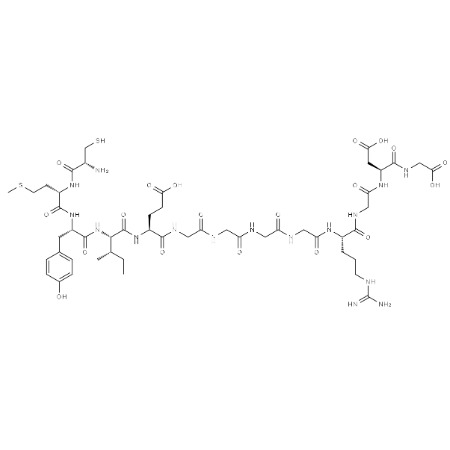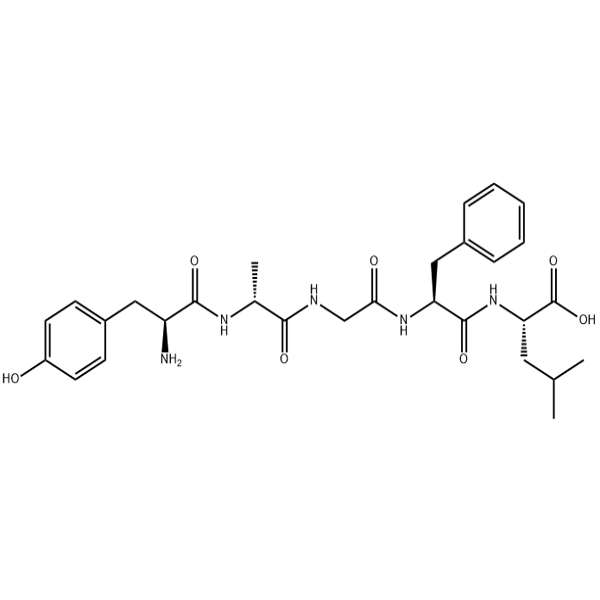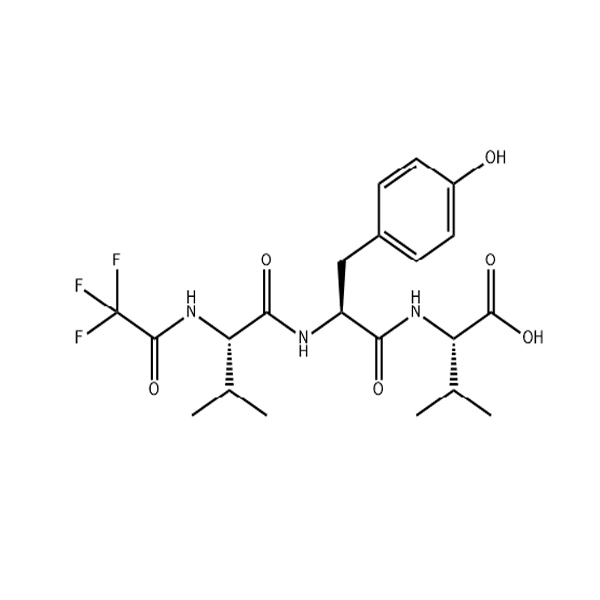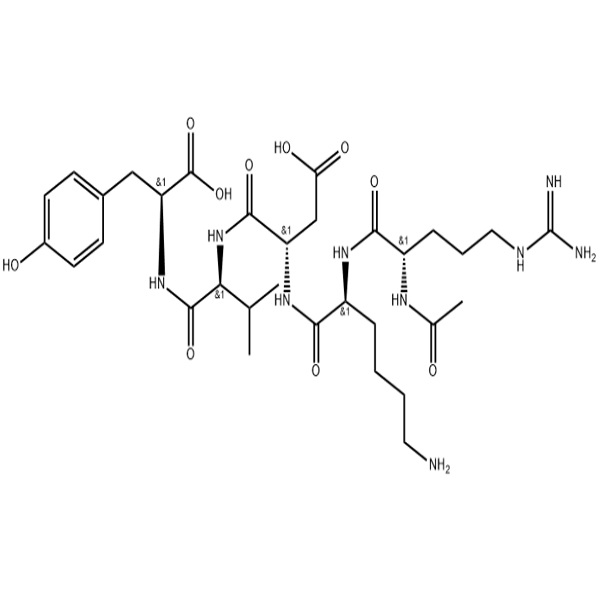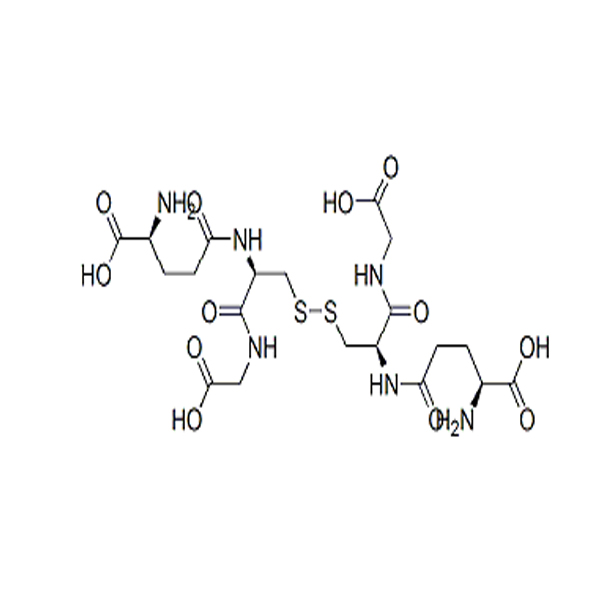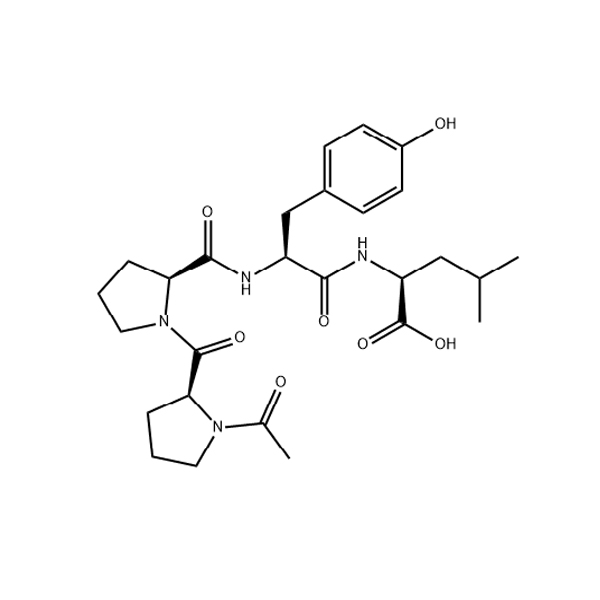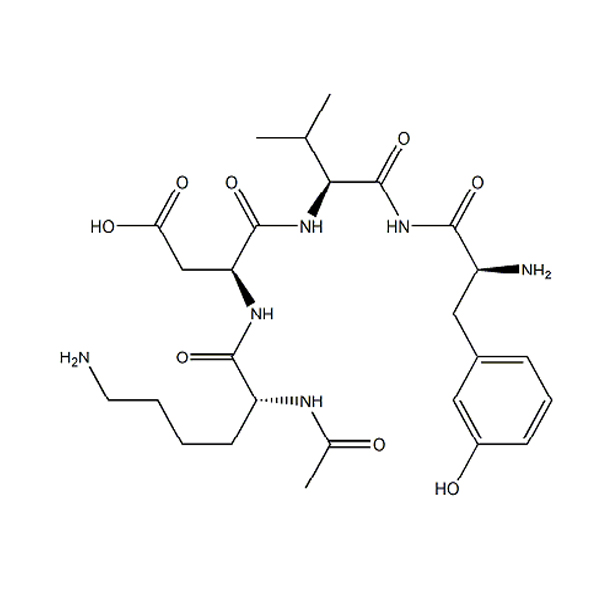Oligopeptide-24 vendor/1018685-16-9/Peptide synthesis
Description
Oligopeptide-24 is a synthetic peptide composed of 13 amino acids. It's used in cosmetics as an anti-wrinkle and skin-firming agent. It works by promoting the synthesis of elastin and hyaluronic acid, and boosting fibroblast activity, which can lead to improved skin elasticity and hydration. Additionally, it has been shown to increase the concentration of endogenous growth factors in the skin.
Specifications
Apperance: White to off-white powder
Purity(HPLC): ≥98.0%
Single Impurity: ≤2.0%
Acetate Content(HPLC): 5.0%~12.0%
Water Content (Karl Fischer): ≤10.0%
Peptide Content: ≥80.0%
Packing and Shipping: Low temperature, vacuum packing, accurate to mg as required.
FAQ:
How do you dissolve polypeptides?
The solubility of polypeptide depends mainly on its primary and secondary structure, the nature of modification label, solvent type and final concentration. If the peptide is insoluble in water, ultrasound can help dissolve it. For basic peptide, it is recommended to dissolve with 10% acetic acid; For acidic peptides, dissolution with 10%NH4HCO3 is recommended. Organic solvents can also be added to insoluble polypeptides. The peptide is dissolved in the least amount of organic solvent (e.g., DMSO, DMF, isopropyl alcohol, methanol, etc.). It is highly recommended that the peptide be dissolved in the organic solvent first and then slowly added to water or other buffer until the desired concentration.
What length of peptide is appropriate?
Peptide synthesis needs to consider factors such as the length, charge, and hydrophilicity of the peptide. The longer the length, the purity and yield of the crude synthetic product decrease, and the difficulty of purification and the chance of non-synthesis will be greater. Of course, the sequence of the functional region of the polypeptide cannot be changed, but for the smooth synthesis of the polypeptide, sometimes some auxiliary amino acids have to be added to the upstream and downstream of the functional take to improve the solubility and hydrophilicity of the polypeptide. If the polypeptide is too short, there may also be problems with synthesis, the main problem is that the synthetic polypeptide has a certain difficulty in the post-processing process, and the polypeptide below 5 peptides generally has hydrophobic amino acids, otherwise the post-processing is more difficult. Peptides below 15 amino acid residues generally have satisfactory yields and yields.
How do I store peptides?
Usually the peptide product you receive is lyophilized powder packaging, please store the peptide in a dry, dark -20°C freezer immediately after receiving the sample to maintain the peptide stability as much as possible. Before use, place the polypeptide packaging tube from the freezer to a dry condition at room temperature, and allow the temperature to naturally warm to room temperature before opening the cap. Otherwise, water vapor in the air will enter the sample tube when the lid is opened, reducing peptide stability. Once opened, it should be weighed quickly and immediately sealed to avoid deliquescent, and hydrophilic peptides should be more careful to avoid repeated freezing and thawing. Outside temperature during short-term transportation will not affect the shelf life and quality of peptides.
What is Net Peptide Content?
It is important to understand the difference between net peptide content and total peptide weight (gross weight). In general, peptide lyophilized powder samples contain not only peptides, but also other substances such as water, solvents absorbed by peptides, counterions, and salts. The total peptide weight (gross weight) refers to the weight of all these mixtures. The net peptide content is relative to the non-peptide substances, balanced ions and water, and after removing these, the remaining is the net peptide content. The net peptide content can be determined by nitrogen analysis or amino acid composition analysis, usually accounting for 50-80% of the total peptide weight. Net peptide content is different from peptide purity, which refers to the percentage of peptide of interest in a sample.
What are the uses of peptides?
Peptides have a wide range of applications in the biomedical field, including:
Drug development: Peptides can be used as lead compounds for drugs or directly as drugs themselves.
Vaccines: Peptides can be used as antigens for vaccine preparation.
Biomaterials: Peptides can be used to construct biomaterials, such as scaffolds for tissue engineering.
Diagnostic reagents: Peptides can be used in the development of diagnostic reagents, such as those for detecting disease-related proteins.
Cosmetics: Certain peptides have moisturizing, anti-aging, and whitening effects and can be added to cosmetics.

